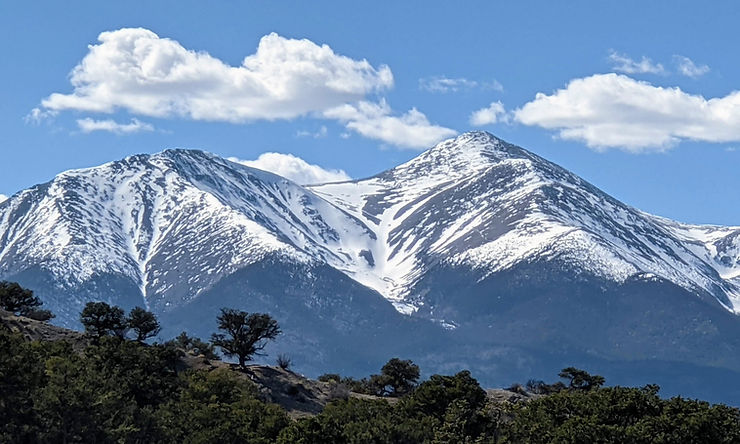Signs in the Snow
- Josh Kurz

- May 4, 2021
- 3 min read
Updated: Mar 27, 2022
Like constellations in the night sky, some see shapes in the snow and claim that they can foretell the future. From October till May, Colorado’s high mountain peaks capture the majority of our precious water supply and lock it up in the form of snow. And then to the delight of ranchers, water supply managers, and whitewater enthusiasts alike, a flood of meltwater is unleashed into our streams and lakes during the brief, annual spring runoff event.
Since adequate streamflow is essential to agricultural life in the Colorado Rockies, some old-timers rely upon their creativity and imagination to forecast the timing and magnitude of the annual spring runoff event. Rather than analyzing tables and charts, old-timers wait for fabled shapes to reappear each year in the melting snowfields that cling to the surrounding mountainsides.
Naturally, Colorado is home to some legendary snowfield shapes. Mount of the Holy Cross, a 14,000-foot peak near Vail, bears a conspicuous cross that was first photographed by William Henry Jackson in 1873.

Mount Shavano, another 14er that towers above Salida, has a snowfield that resembles an angel with open arms. According to local folklore, tears from the Angel of Shavano supply water to the thirsty Arkansas Valley year after year.

Of course, the Pagosa Springs area has several subjective snowfield shapes of our own. Blackhead Peak is one of the most prominent peaks on the eastern skyline and can be seen from many downtown and uptown locations. Each winter, Blackhead Peak collects a massive snow canvas that usually lasts through June.
A few years ago, long-time teacher, coach, and rafting guide, Lindsay Kurt-Mason, pointed out a dolphin-like shape that emerges near the top of the peak as the snowfield melts. According to Lindsay, when the dolphin jumps out of the snowfield, the peak flow has passed and spring runoff is on the decline. He also pointed out a pair of snowfield geese flying north on Quartz Ridge around the same time.

According to lifetime resident and river engineer, Chris Pitcher, some old-timers say that the Blackhead snowfield resembles an old man peeing and when his stream runs out, the runoff recedes. Multi-generational resident, Eddie Archuleta, coincidentally sees a face of a mustache-wearing logger in the upper left of the same snowfield.
Recently, I pointed out the snow dolphin to one of my students, and she thought it looked more like a swordfish. Since dolphins and swordfish are scarce in these parts, I propose that we honor the recently rediscovered San Juan cutthroat trout.
In 1874, a naturalist collected two cutthroat trout specimens near Pagosa Springs and sent them to the Smithsonian Museum in Washington DC (Colorado Parks and Wildlife, 2018). For nearly 140 years, the specimens collected dust.

Their lineage was presumed to be extinct by everyone but a handful of local fish biologists (including Pagosa Springs High School graduate, Jim White). The fish biologists had a hunch that remnant populations still existed above our plentiful wilderness waterfalls, which serve as natural barriers to migrating non-native trout. By 2018, advances in genetics confirmed that the DNA of the preserved specimens matched tissue samples from several populations of cutthroat trout living in the remote headwaters of the San Juan River.

To celebrate our recently rediscovered native, I’ll propose reclassifying the snow dolphin as a San Juan cutthroat trout at the next Snowfield Shape Advisory Board meeting. In the meantime, watch for our native cutthroat trout to appear on Blackhead Peak and see if its leap coincides with the peak spring runoff event raging through downtown Pagosa Springs.
Reference
Colorado Parks and Wildlife. (2018, September 4). Colorado Parks and Wildlife announces discovery of unique cutthroat trout in southwest Colorado. https://cpw.state.co.us/aboutus/Pages/News-Release-Details.aspx?NewsID=6676
Comments